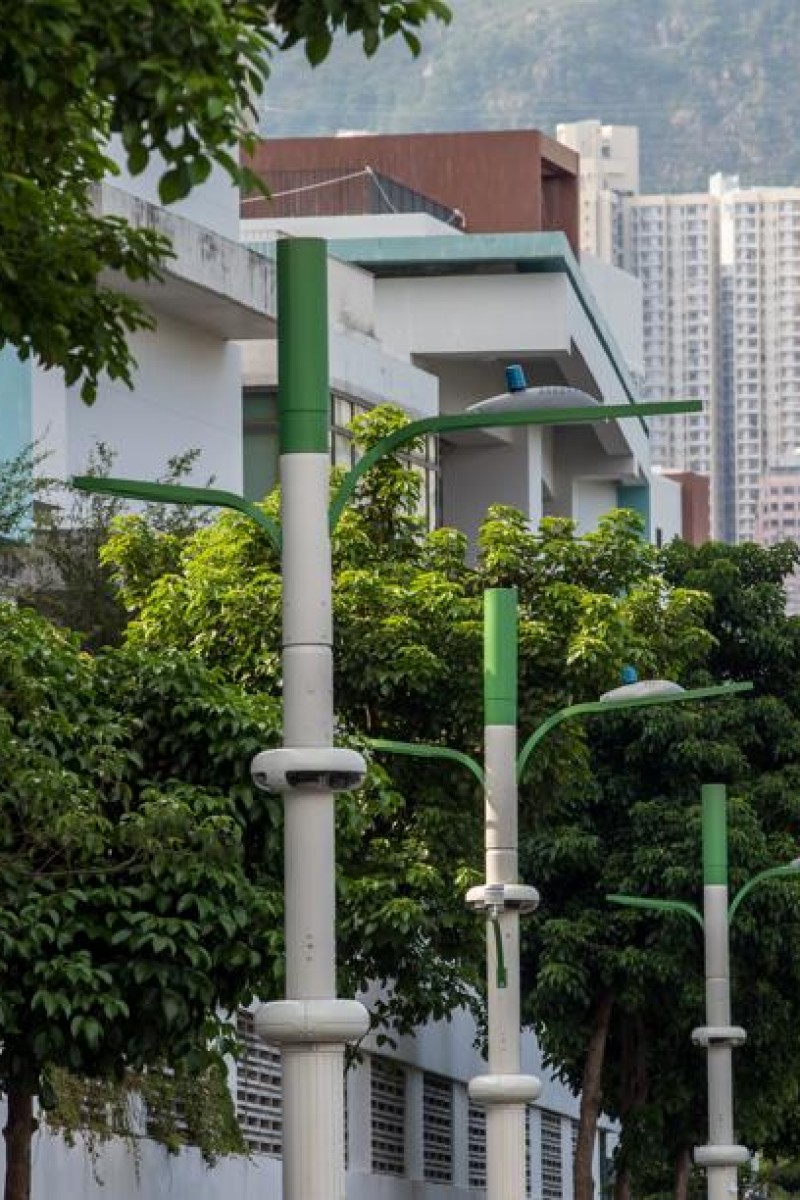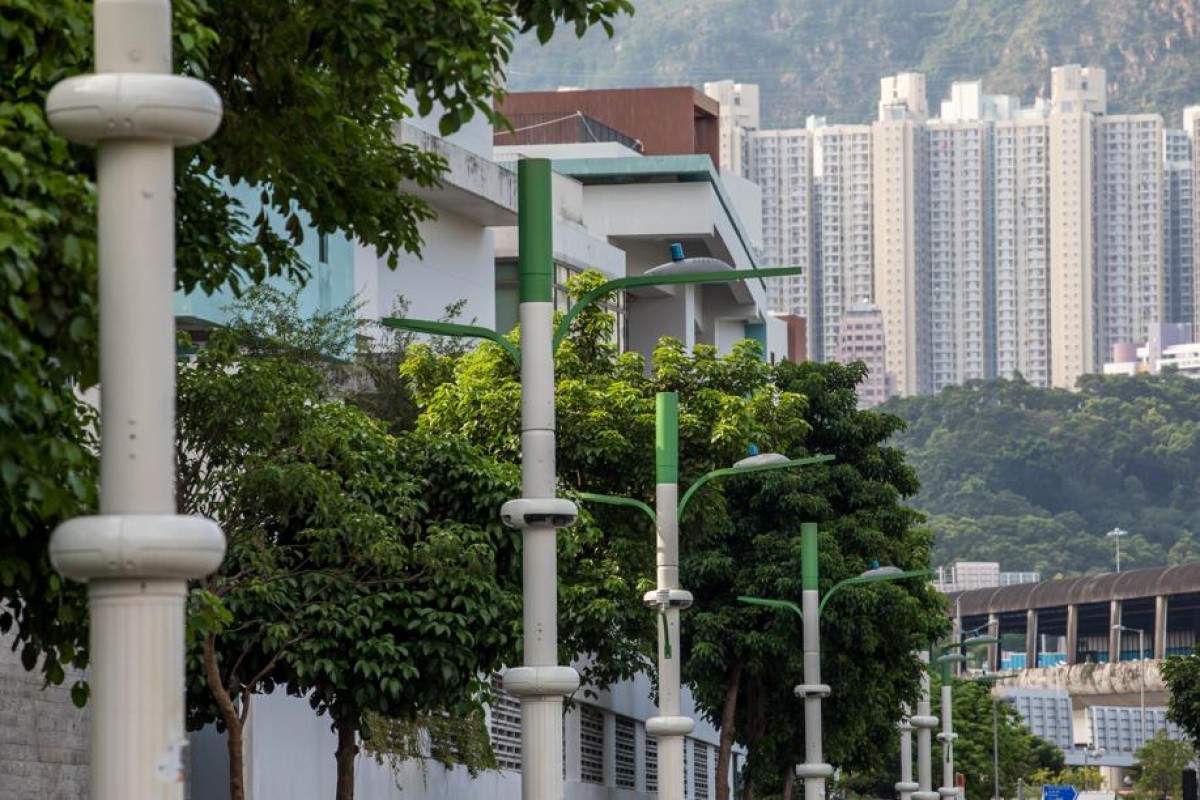
Many Hongkongers fear this new technology, already installed in Kwun Tong and the Kai Tak development zone, could be used for surveillance purposes.
 Around 50 smart lamp posts have already been installed in the Kwun Tong area, with 350 more meant to be rolled out over the next three years.
Around 50 smart lamp posts have already been installed in the Kwun Tong area, with 350 more meant to be rolled out over the next three years.Violence broke out in Kowloon Bay on Saturday during a protest over smart lamp posts. Protesters destroyed the lamp posts and used electric saws to cut through them. Police used tear gas on the crowd after some demonstrators threw petrol bombs and bricks. Why are people so upset over these lamp posts?
What are smart lamp posts?
According to the government, smart lamp posts are meant to measure traffic conditions, weather information, and air quality data, as well as monitor illegal dumping and provide free Wi-Fi services.
Around 50 smart lamp posts were installed in Kwun Tong and the Kai Tak development zone in June. 350 more are set to be installed over the next three years. The government has said the lamp posts do not have any facial recognition featues and will not be shared with third parties for identification purposes, but some Hongkongers are wary.
Chaotic scenes return to protests after two weeks
Why are people concerned about the lamp posts?
Some people believe the lamp posts are surveillance tools, as they are fitted with sensors, closed-circuit cameras and data networks. They fear they could contain hi-tech cameras and facial recognition software used for surveillance by the Chinese government.
Similar fears were felt by residents in Singapore last year, when the island-nation's government announced they would install cameras with facial recognition software to perform crowd analytics and support anti-terror operations.
This technology is already common in mainland Chinese cities, like Beijing and Shanghai.
MTR toughens its stance on anti-government protesters
Privacy is a huge concern these days, as Hongkongers travelling into the mainland have had their phones searched for photos of the protests. There have also been concerns about the hospital authority releasing patient data to the police, after at least two protesters were arrested at Queen Elizabeth hospital after receiving treatment for injuries sustained at the protest on June 12.